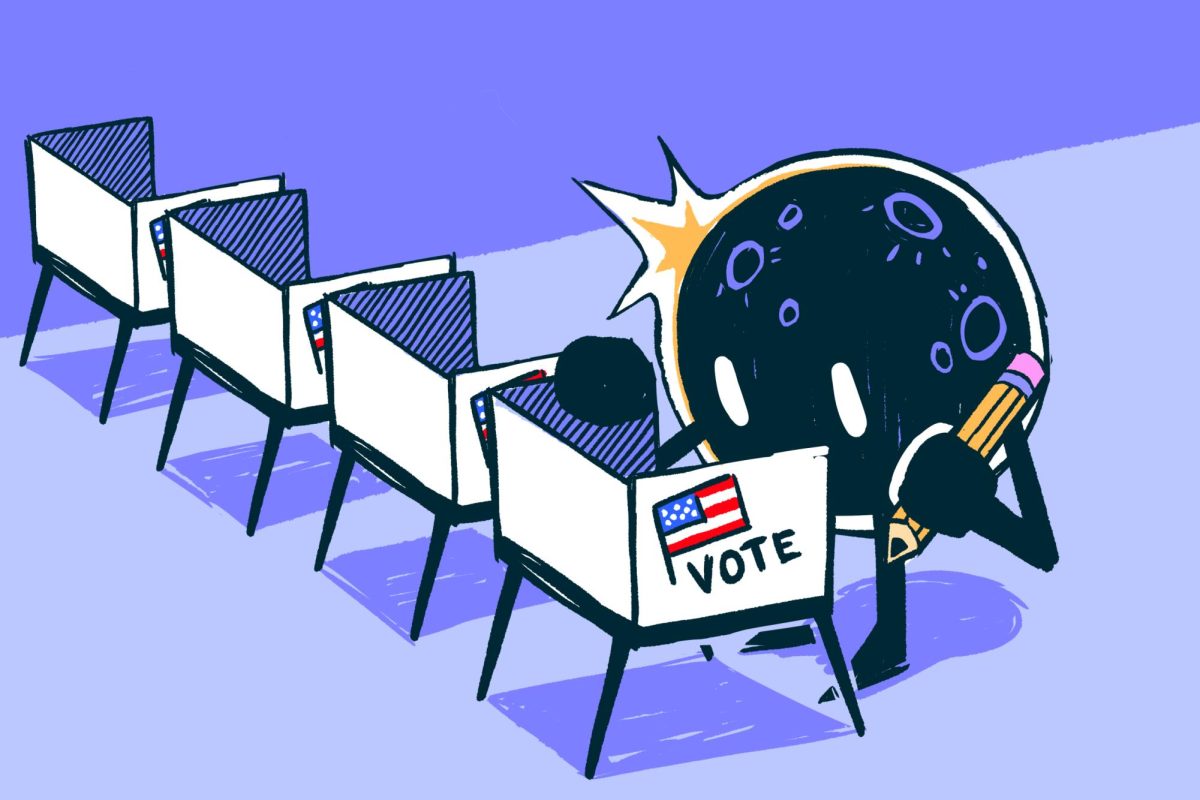Interludes are often considered the forgotten middle child of albums. While a record itself may broadly be viewed as a masterpiece, the meager interlude is often not explicitly accoladed even when contributing to a large, successful body of work.
An interlude, specifically in a musical sense, is defined by Merriam-Webster as a “musical composition inserted between the parts of a larger composition.” In modern music-making, interludes are often under two minutes in length but can still hold tremendous value if placed thoughtfully in a composition.
The meaning of an interlude is not one singular idea — instead, it serves many purposes depending on the artist’s desired use.
For those who create concept albums, interludes are a meaningful transition to an album’s progressing narrative. This is done either by providing thematic context between songs or switching up the tempo and overall feel of the album.
Although not denoted as an interlude, Ethel Cain’s “Televangelism” is a great example. It continues the narrative of Cain’s “Preacher’s Daughter” by providing a moving three-minute piano solo, representing Cain’s ascension into heaven.
Get The Daily Illini in your inbox!
“Televangelism” touches on another concept used in interludes — the lack of vocals. For longer conceptual albums that are lyrically dense, artists will often insert an entirely instrumental piece.
While on its own, this may not be appealing to the average audience. However, a song that consists purely of instrumentals can be supplemental to the overall story and mood of an album.
In other words, its simplicity and emphasis on instrumentals can lend value to the following songs by altering the general tone of an album as a whole.
While interludes can serve a larger purpose in albums, they can also be standalone songs that perform beautifully without the intent of advancing a narrative.
Victoria Monét’s “We Might Even Be Falling In Love” captures this idea perfectly. Serving as the most played track on Monét’s “JAGUAR,” the song is an efficiently executed and melodically brilliant way to illustrate the feeling of being in love in under a minute.
The success garnered from Monét’s interlude is the exception, however, not the reality.
Most interludes go unnoticed by anyone who isn’t a fan of the artist. SZA’s “Wavy” represents this idea, having fewer listens than all other songs on the critically acclaimed “Ctrl.” The song itself however is not sonically inferior or more haphazardly produced compared to others on the album, it’s just shorter.
I’ve quoted Beyoncé’s famous line “People don’t make albums anymore” in a previous column, but now I’ll lay claim to a similar sentiment, albeit on the side of the audience.
People don’t listen to albums anymore.
One may find this particular digression to be somewhat dramatic, but it proposes an explanation as to why thoughtfully produced interludes go unheard of by the general public.
Whether an artist includes it to advance a narrative, to change the overall feel of the album or just to have a shorter song thrown in, the value one perceives from listening to an interlude is most powerful when the listener can experience its place in a project holistically.
Interludes are short, and it makes sense that a listener has zero inclination to add a 45-second song to their playlist. There’s nothing wrong with wanting to listen to the longer, more in-depth or more popular tracks on an album.
The power of the interlude, however, should not be discarded or discredited solely due to its abbreviation.
Take the time to listen to interludes made by your favorite artist. You may find yourself pleasantly surprised.
Matthew is a junior in LAS.















